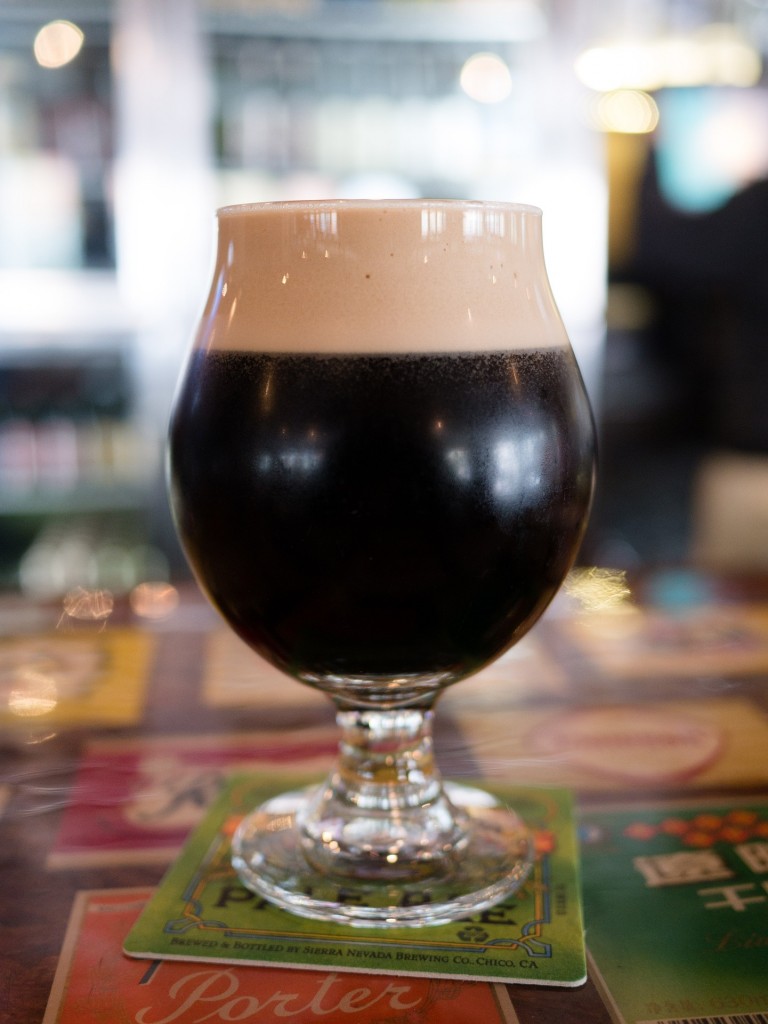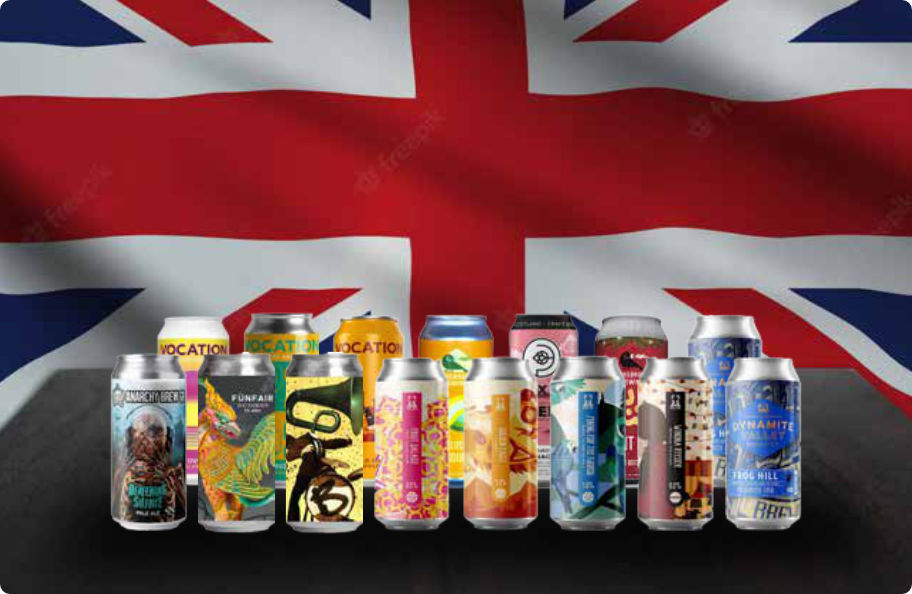Guides and Facts
What is the Difference Between Stout and Porter? | Encyclobeeria Part…
What is the Difference Between Stout and Porter? | Encyclobeeria Part 5
Originally Posted on Oct 05, 2016
ORIGINS AND HISTORY
Well the question is not quite as straight forward as you may think. This is not just a case of explaining the differences between two styles because for that to work, you have to actually have two different styles. You see, there is a lot of myth and misunderstanding surrounding the history of the two names for quite possibly the same beer. To identify any differences between them, lets start at the beginning to find where the beer they lend their names to derived from.
We begin in the 18th century (don’t worry you’ll be back for tea), in a place called London where many local brewers are brewing brown ales at the time. How the porter was first made or who did it remains a mystery, although there are a couple of feasible stories that may well have been true. It is, for the most part, agreed that the style originated in the 1720’s and it was a thicker, stronger version of a brown ale. It is assumed the name comes from the job ‘porter’ or ‘carrier’ as it was mostly associated with the working class who consumed it. A porter was first made with 100% brown malt and could be aged at the brewery and could then be sold ready to drink, which meant it could be produced and sold on a level never seen before and its popularity in London subsequently soared.
The word stout is actually even older than that with the first use of the word in relation to beer being in 1677, having been used in a manuscript by the 8th Earl of Bridgewater to simply mean ‘strong’. This was the original definition of the word and there was a time where the ‘stout pale ale’ existed simply because of its strength. Now, onto its connection with porters. Typically brewers were experimenting with the porters and stronger versions of the style began to emerge. It was coined brown stout, because it was brown and stronger than the usual 4-5% porters that were popular at the time but it was a porter none the less. It really became popular in 1776, when a small craft company called Guinness produced their own ‘Double Brown Stout Porter’, which to us today is about three different sub-styles rolled into one, showing just how blurred the lines became over the years.
In 1817 a new ingredient called black patent malt entered the market, which gave the stout porter its own black colour and the porter suffix was eventually dropped and the stout became its own so-called style. The divide between the two became more distinctive in the first half of the 20th century when taxes on grains during the world wars meant that porters were brewed with a lower gravity and then the idea that stouts are brewed thicker, stronger and darker became common. However both styles were close to dying out in the 1950’s-70’s where Britain entered its beer dark ages.
A revival of the styles in the UK and the USA is well and truly underway but still brewing a very similar beer under two very different names. The idea that a stout is dark and stronger is still present, while a newer philosophy that porters should be brewed with malted barley while stouts are produced with un-malted roasted barley is also creating an illusion they are two different styles. Unfortunately, that is as clear as it gets as brewers have blurred all of those lines with new creations that spare no mercy for straight forward styles. Porters stronger and darker than stouts are available while the most consumed stout in the world, Guinness has just a 4.2% ABV.
Not even brewers themselves can clearly separate between the two names, which are used willy-nilly around the world without real reason to do so. But who are we to tell you there is not really a difference, try Stouts and Porters for yourself and no matter if you can or can’t differentiate, the main thing is to enjoy what you’re drinking. Who knows, you might just find a beer or two that make the question irrelevant.
SPECIFICATION
Here are the brewing stats for Stout and Porters, which shows small differences between the two that give the impression they are very much isolated styles.
| Stout and Porter | Porter | Stout |
| ABV | 4.5-6% | 3-6% |
| IBU | 20-30 | 15-25 |
| Colour | dark brown-very dark | black |
| Hops | Fuggles | Kent Goldings |
| Malts | British Pale Ale, Brown, Crystal, Chocolate | British Pale Ale, Black Patent, Pale Chocolate, Crystal |
| Tasting Notes | The hops are never very apparently in the aroma, overshadowed by the vast malt presence. Chocolate, caramel, grain, toffee and nuts can be often found on the palate with a hint of hop bitterness. | Malt sweetness, chocolate and caramel are at the forefront of the taste, with low-medium hop bitterness. Low malt bitterness as well balanced by hops. Low-medium carbonation with a lengthy finish and mild alcohol taste |
| Glass | Nonic | Nonic |
| Serving Temperature | 10-12⁰C | 10-12⁰C |
| Food Pairings | roasted or grilled meats | Mexican or BBQ |
RECOMMENDATIONS
Meantime Chocolate Porter is the pick of the UK porter, the seemingly unusual pairing of beer and chocolate goes together in perfect harmony to create another great beer from the ever popular London Brewery. Four different malts combine to make this porter, with real chocolate added in the maturing phase of production. Its complexity in the taste is matched by its overall smoothness and it has a long clean finish. Its sweetness is wonderfully suited as a dessert beer or simply on its own as well as pairing with beef or game stews.

Samuel Smiths Oatmeal Stout is a stout from Yorkshire and is one of our bestselling stouts here at Beers of Europe. It is a special sub-style of stout and contains oatmeal, as the name suggests, to produce a 5% stout packed with flavour. It is brewed using hard well water 85 feet below ground and is almost opaque in colour. It is a silky and smooth textured ale with a medium dry palate and bittersweet finish. It can be best served at 13⁰C and is best served in a nonic pint glass. It is also suitable for vegetarians.
Anchor Porter is our choice from the other side of the Atlantic. It was first brewed in 1972, is 5.6% in ABV and is available all year round. It is brewed using 2-Row Pale, Caramel, Black and Chocolate malts as well as Northern Brewer hops to create a porter in its most classic form; a deep dark colour, creamy head and an aroma of chocolate, toffee and coffee notes. The malts with the yeast combined creates a complexity in the flavour that is well balanced and the deceiving darkness in the glass tastes surprisingly light on the palate. It is a favourite in store and with good reason, a great beer from a fantastic brewery.
Lion Stout comes from Sri Lanka and is very highly regarded across the world. It weighs in at 8%, so you would certainly know you have had it and it uses British, Czech and Danish malts as well as an English yeast strain and Styrian hops. All these quality ingredients travel across precarious roads to the brewery which stands 3,500 feet above sea level to ensure that its greatness can be brought to you. It can be served in an English pint glass or in a tulip glass, probably depending if you have a 625ml or 330ml bottle.
CONCLUSION
The journey that the stout and porter have travelled over the past few centuries has been constantly intertwined and will continue to do so in the future. Despite their revival in the USA, the stout and porter will always be British classics, represented so well by our UK beers over the years and imitated with great success by breweries across the world. With Winter just around the corner, there is no better time to enjoy a warming stout and porter as the weather starts to cool. From the UK, or one of our excellent selection of worldwide stouts or porters, you can be sure to find one you’ll love.
Article by Matthew Keeley-Smith




